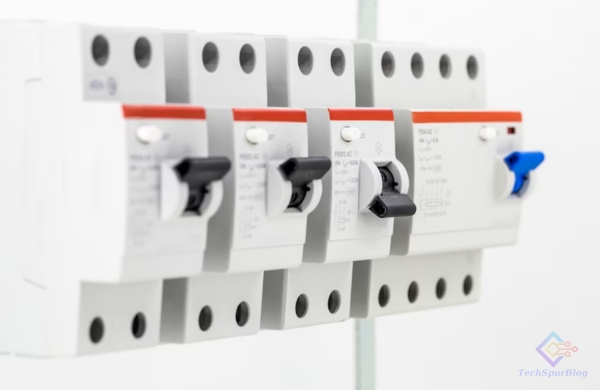
In the ever-evolving world of technology, electricity remains a fundamental aspect of our daily lives. From powering our homes to driving industrial machinery, electrical systems play a pivotal role in ensuring our comfort and productivity. However, with great power comes the need for great responsibility. This responsibility falls on the shoulders of Moulded Case Circuit Breakers (MCCBs), often regarded as the silent guardians of electrical systems. In this comprehensive guide, we will explore the world of MCCBs, their significance, functionality, and why they are essential for safeguarding electrical systems.
Electricity is a powerful force that we have harnessed for our convenience. However, it can also be dangerous when not managed properly. This is where Moulded Case Circuit Breakers (MCCBs) step in. These devices are designed to protect electrical systems from overloads and short circuits, ensuring both safety and reliability.
Understanding Moulded Case Circuit Breakers
What are MCCBs?
MCCBs are electromechanical devices that automatically interrupt the flow of electricity when it exceeds safe levels. They consist of a molded case housing various components, including circuitry and a trip mechanism. MCCBs are installed in electrical panels and distribution boards to safeguard circuits and equipment.
How Do MCCBs Work?
MCCBs employ a dual protection mechanism – thermal and magnetic. The thermal component responds to overcurrents caused by excessive loads, while the magnetic component reacts to sudden short circuits. When a fault is detected, the MCCB trips, interrupting the current flow and preventing damage.
Importance of MCCBs
Overcurrent Protection
One of the primary functions of MCCBs is to protect against overcurrents. When equipment draws more current than it should, MCCBs intervene, preventing overheating and potential fires.
Short Circuit Protection
Short circuits can lead to catastrophic failures if not addressed promptly. MCCBs detect these faults instantly and disconnect the circuit, preventing extensive damage.
Types of MCCBs
Thermal Magnetic MCCBs
These MCCBs use a bimetallic strip to respond to overcurrents and a solenoid coil to detect short circuits. They are reliable and widely used in various applications.
Electronic Trip MCCBs
Electronic trip MCCBs offer more precise protection. They use microprocessors to monitor currents and can be adjusted for specific trip curves, making them suitable for sensitive equipment.
Choosing the Right MCCB
Current Rating
Selecting an MCCB with the appropriate current rating is crucial. It should match the equipment’s requirements to ensure efficient protection.
Trip Curves
Understanding the trip curves helps in configuring MCCBs to respond accurately to different types of faults, optimizing safety.
Installation and Maintenance
Proper Installation
Correct installation is vital for MCCBs to function effectively. Professional installation ensures that the MCCB is integrated into the electrical system correctly.
Routine Maintenance
Regular inspections and maintenance checks guarantee that MCCBs are always ready to perform their protective duties.
Applications of MCCBs
Residential Use
In homes, MCCBs protect circuits, appliances, and wiring. They ensure the safety of your family and property.
Industrial and Commercial Use
Industries and businesses rely on MCCBs to protect valuable equipment, prevent production downtimes, and enhance safety standards.
MCCBs vs. Fuses
While fuses serve a similar purpose, MCCBs offer advantages like resetability and adjustable trip settings, making them more versatile and cost-effective in the long run.
The Future of MCCBs
As technology advances, MCCBs continue to evolve. Smart MCCBs with remote monitoring capabilities are becoming increasingly popular, allowing for proactive maintenance and enhanced system control.
Conclusion
Moulded Case Circuit Breakers are the unsung heroes of our electrical systems. They tirelessly protect us from the dangers of electrical faults, ensuring that our homes, businesses, and industries run smoothly and safely. Investing in the right MCCB is an investment in the reliability and longevity of your electrical infrastructure.
FAQ’s
Q:- What is the lifespan of an MCCB?
- MCCBs have a long lifespan, often exceeding 20 years with proper maintenance.
Q:- Can I replace a blown MCCB myself?
- It is recommended to have a licensed electrician replace an MCCB to ensure safety and compliance.
Q:- Are MCCBs suitable for both AC and DC applications?
- Some MCCBs are designed for both AC and DC use, but it’s essential to check the specifications to ensure compatibility.
Q:- Do MCCBs require any regular testing or calibration?
- Routine testing and calibration are not necessary for standard MCCBs but can be performed for added safety in critical applications.
Q:- Are there any environmental considerations when disposing of MCCBs?
- Yes, MCCBs contain materials that should be disposed of properly to minimize environmental impact. Consult local regulations for guidance.
By understanding the significance of Moulded Case Circuit Breakers and their role in electrical systems, you can make informed decisions to protect your property and loved ones. Don’t underestimate the value of these silent guardians; they are the backbone of electrical safety.

Leave a Reply